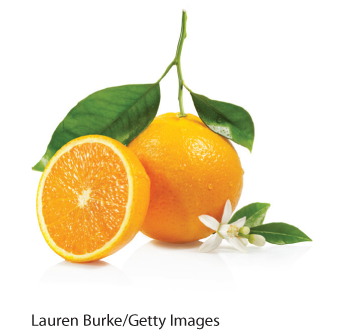Taste
Like touch, gustation—our sense of taste—involves several basic sensations. Taste’s sensations were once thought to be sweet, sour, salty, and bitter, with all others stemming from mixtures of these four (McBurney & Gent, 1979). Then, as investigators searched for specialized nerve fibers for the four taste sensations, they encountered a receptor for what we now know is a fifth—the savory, meaty taste of umami, best experienced as the flavor enhancer monosodium glutamate (MSG).
Tastes exist for more than our pleasure (see Table 21.1). Pleasureful tastes attracted our ancestors to energy- or protein-rich foods that enabled their survival. Aversive tastes deterred them from new foods that might be toxic. We see the inheritance of this biological wisdom in today’s 2- to 6-year-olds, who are typically fussy eaters, especially when offered new meats or bitter-tasting vegetables, such as spinach and brussels sprouts (Cooke et al., 2003). Meat and plant toxins were both potentially dangerous sources of food poisoning for our ancestors, especially children. Given repeated small tastes of disliked new foods, however, most children begin to accept them (Wardle et al., 2003). We come to like what we eat. Compared with breast-fed babies, German babies bottle-fed vanilla-flavored milk grew up to be adults with a striking preference for vanilla flavoring (Haller et al., 1999). The taste-exposure phenomenon even extends to the womb. In one experiment, babies whose mothers drank carrot juice during the end of pregnancy and the early weeks of nursing developed a liking for carrot-flavored cereal (Mennella et al., 2001). (Module 38 will explore cultural influences on our taste preferences.)
| Taste | Indicates |
|---|---|
| Sweet | Energy source |
| Salty | Sodium essential to physiological processes |
| Sour | Potentially toxic acid |
| Bitter | Potential poisons |
| Umami | Proteins to grow and repair tissue |

Taste is a chemical sense. Inside each little bump on the top and sides of your tongue are 200 or more taste buds, each containing a pore that catches food chemicals. In each taste bud pore, 50 to 100 taste receptor cells project antenna-like hairs that sense food molecules. Some receptors respond mostly to sweet-tasting molecules, others to salty-, sour-, umami-, or bitter-tasting ones. Each receptor transmits its message to a matching partner cell in your brain’s temporal lobe (Barretto et al., 2015). Some people have more taste buds than others, enabling them to experience more intense tastes. These “supertasters” can also taste some things that the rest of us cannot (Bartoshuk, 2000).
It doesn’t take much to trigger a taste response. If a stream of water is pumped across your tongue, the addition of a concentrated salty or sweet taste for but one-tenth of a second will get your attention (Kelling & Halpern, 1983). When a friend asks for “just a taste” of your soft drink, you can squeeze off the straw after a mere instant.
Taste receptors reproduce themselves every week or two, so if you burn your tongue it hardly matters. However, as you grow older, the number of taste buds decreases, as does taste sensitivity (Cowart, 1981). (No wonder adults enjoy strong-tasting foods that children resist.) Smoking and alcohol use accelerate these declines. Those who have lost their sense of taste have reported that food tastes like “straw” and is hard to swallow (Cowart, 2005).
There’s more to taste than meets the tongue. Expectations can influence taste. When told a sausage roll was “vegetarian,” nonvegetarian people judged it decidedly inferior to its identical partner labeled “meat” (Allen et al., 2008). In another experiment, when adults were told that a wine cost $90 rather than its real $10 price, they reported it tasting better and a brain area that responds to pleasant experiences showed more activity (Plassmann et al., 2008). Contrary to Shakespeare’s presumption (in Romeo and Juliet) that “A rose by any other name would smell as sweet,” labels matter. And speaking of smell . . . .